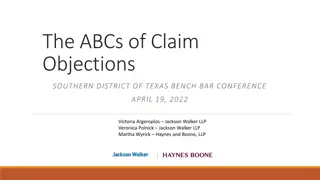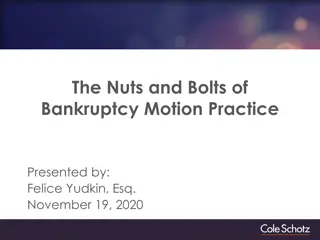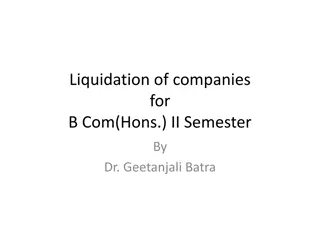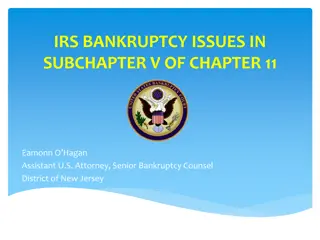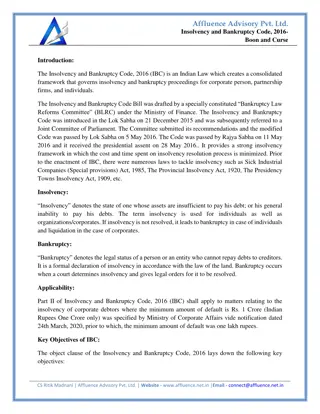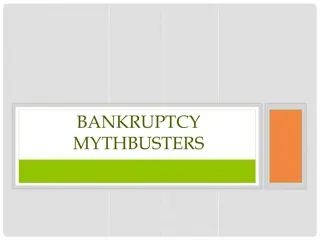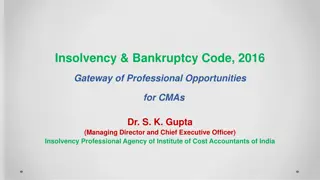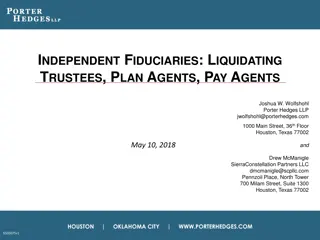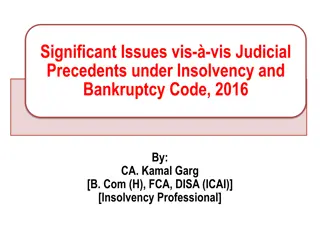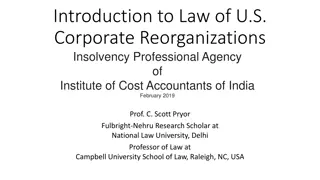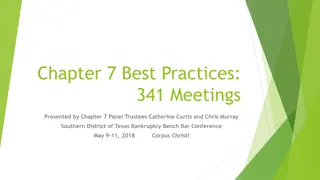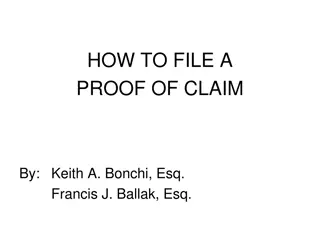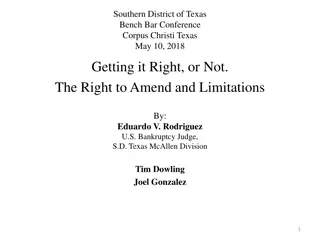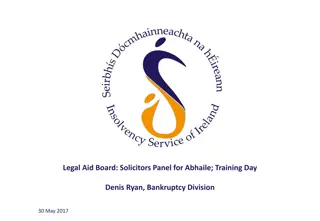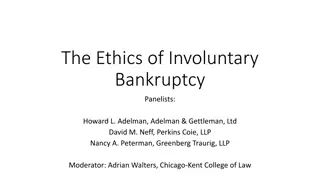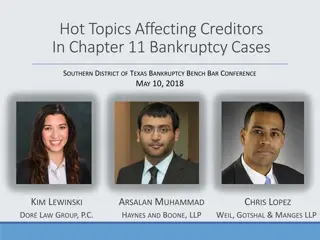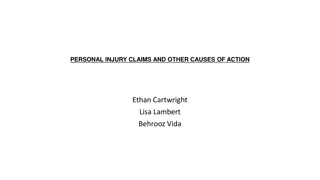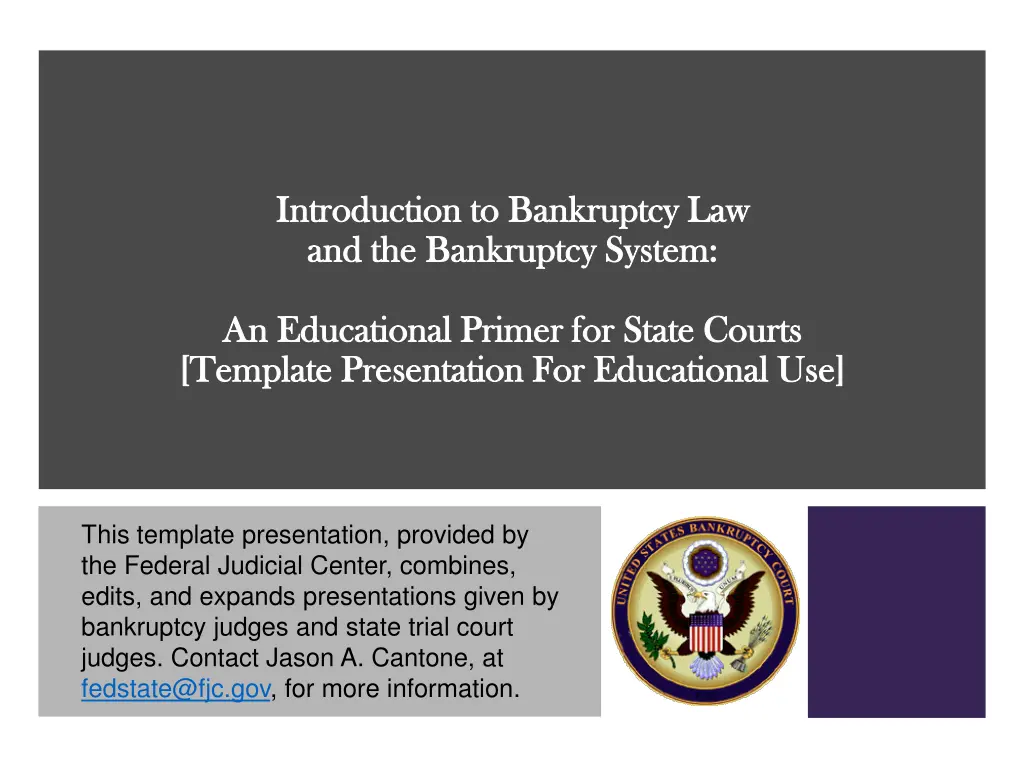
Bankruptcy Law Overview and Resources for State Courts
Explore an educational primer on bankruptcy law and the bankruptcy system tailored for state courts. Gain insights on bankruptcy schedules, family law considerations, fraud findings, and property rights determinations in connection with bankruptcy proceedings.
Download Presentation

Please find below an Image/Link to download the presentation.
The content on the website is provided AS IS for your information and personal use only. It may not be sold, licensed, or shared on other websites without obtaining consent from the author. If you encounter any issues during the download, it is possible that the publisher has removed the file from their server.
You are allowed to download the files provided on this website for personal or commercial use, subject to the condition that they are used lawfully. All files are the property of their respective owners.
The content on the website is provided AS IS for your information and personal use only. It may not be sold, licensed, or shared on other websites without obtaining consent from the author.
E N D
Presentation Transcript
Introduction to Bankruptcy Law Introduction to Bankruptcy Law and the Bankruptcy System: and the Bankruptcy System: An Educational Primer for State Courts An Educational Primer for State Courts [Template Presentation For Educational Use] [Template Presentation For Educational Use] This template presentation, provided by the Federal Judicial Center, combines, edits, and expands presentations given by bankruptcy judges and state trial court judges. Contact Jason A. Cantone, at fedstate@fjc.gov, for more information.
Content Note This presentation only addresses the additional considerations. A full presentation with all six topics (bankruptcy overview; automatic stay; bankruptcy discharge; family law; foreclosure; additional considerations) is available at fjc.gov/fedstate, as well as separate presentations for each of those topics.
Additional Considerations and Resources
Advice: Compare bankruptcy schedules (which includes lists of debts, assets, income, and expenses) with the family law financial affidavit especially in connection with contempt proceedings. Advice: When you are directing payment to or for the benefit of one spouse from another, including any award of attorney fees or expenses, make very clear that it is in the nature of alimony, support, and maintenance and why. A mere label will not be binding on the bankruptcy judge who is required to make a finding unless your findings are specific. Additional Considerations
Advice: If a finding of fraud is the basis for a final judgment, include that finding when drafting the final judgment. The more specific the findings of fact, the greater likelihood that the issues will not be relitigated in a subsequent bankruptcy proceeding. The same applies to verdict forms. Specifically find how the damages are apportioned between torts, because the damages arising from one tort may be dischargeable while damages arising from a different tort may be excepted from discharge. Additional Considerations
Advice: If you suspect that one party may file bankruptcy upon a dissolution ruling, enter an order or judgment making a final determination of property rights of the parties as soon as practicable. Additional Considerations Advice: If you monetize an interest in the marital home, make sure the obligation is secured either by an equitable lien or an actual recorded mortgage.
The defense of judicial estoppel is often raised by defendants in state court actions when the cause of action has not been scheduled by the debtor in the bankruptcy case. Additional Considerations Advice: Consider who would be harmed in the case by the application of judicial estoppel. Debtor only or creditors?
If a state court learns a former debtor failed to schedule a litigation asset in the bankruptcy case, the state court might want to direct the debtor to notify the trustee or court in writing of such failure and of the pendency of the state court litigation. Additional Considerations That way, the litigation asset may not be lost as an asset in the bankruptcy process.
Additional Resources Federal Judicial Center website on federal- state cooperation: https://fjc.gov/fedstate National Center for State Courts resource guide on foreclosures: https://www.ncsc.org/Topics/Financial/Foreclos ures/Resource-Guide.aspx
This presentation was organized by Federal Judicial Center Senior Research Associate Jason A. Cantone, with considerable assistance by a number of federal and state judges and court personnel (see note for slide 1). Thank You Questions about the presentation and its use can be directed to Dr. Cantone, at fedstate@fjc.gov. We would also like to hear from you if you find it helpful or have any recommendations to improve it.

